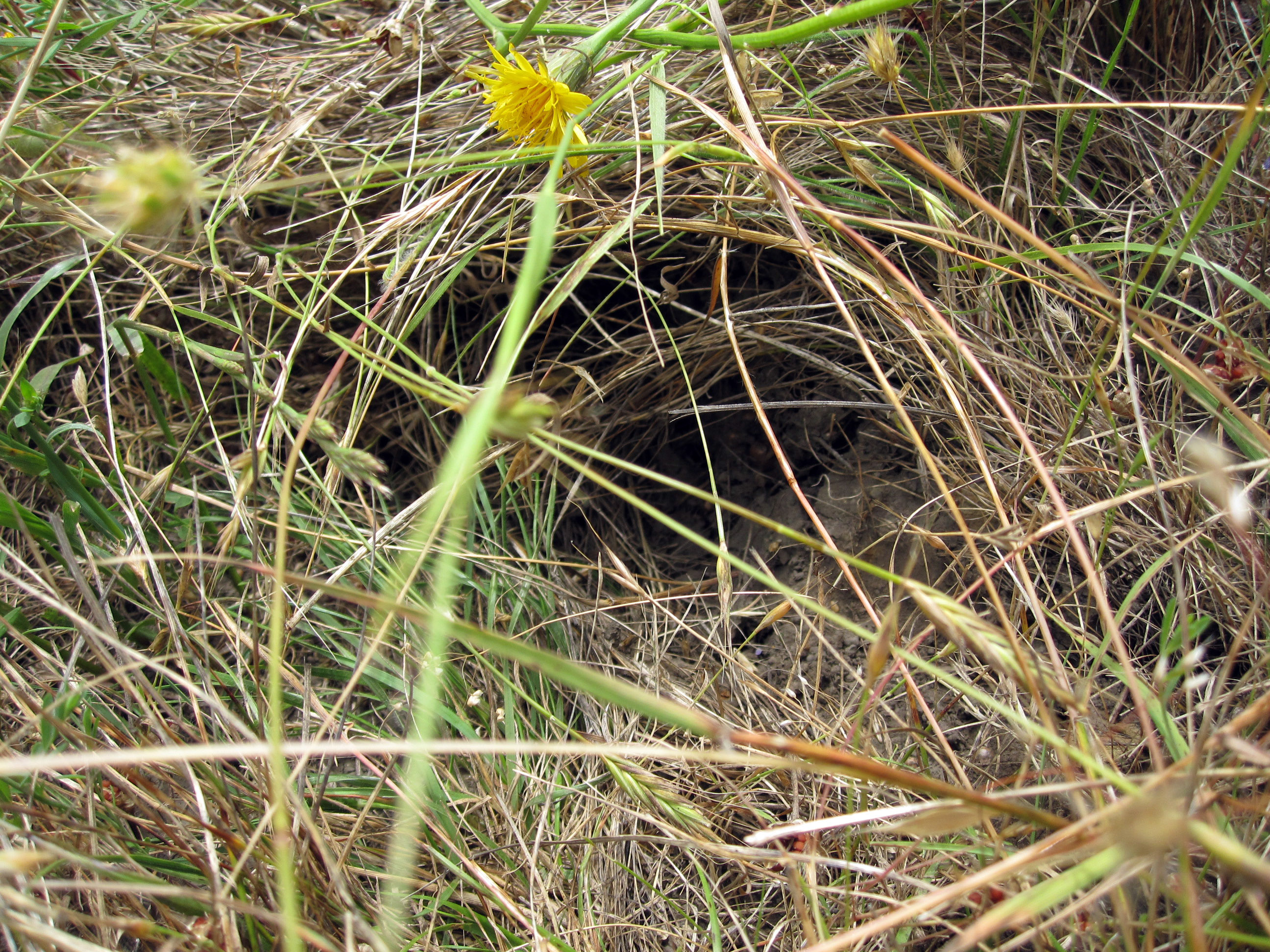Ecology:
Shelter
Shelter in Coastal Prairies
With the lack of shrubs and trees, coastal prairies are open habitats, making cover a particularly difficult problem for many species. Birds and mammals will seek out the larger perennial grasses, sometimes even weaving or bending them over their nests. Small animals burrow into the ground or utilize burrows dug by other animals. Dense patches of grasses, forbs or sedges can act as refuges providing nesting areas and cover for small animals, birds, reptiles, and insects. Thatch can provide important cover for insects and mollusks. Raptors and other birds of prey that hunt in grasslands utilize nearby trees for nesting and cover. In more recent times, humans planted cypress, eucalyptus and other trees to gain shelter from strong ocean winds which are often used by birds of prey for perching and nesting.
Survival Strategies with Little Shelter
Tunneling
Most burrowing animals have sharp claws that they use for digging.
- Badgers (Taxidea taxus) use their long claws to dig their prey out of the ground and to dig dens. Their dens are burrows up to 30 feet long and 10 feet deep with large mounds of soil built up at the entrance. Badgers move to new dens sometimes as often as every day (Salmon and Gorenzel 2010).
- Pocket gophers (Thomomys bottae) are named for the two fur-lined pouches, one on the outside of each cheek, in which they transport collected food to underground storage chambers. The pouches can be turned inside out to dislodge grass and seeds at cache sites (Case RM, Jasch BA. 2005. Internet Center for Wildlife Damage, University of Nebraska.
Surface Tunneling
- California meadow voles, also known as meadow mice or field mice, (Microtus californicus) create grass tunnels or runways that lead to their burrow openings. Meadow voles are the primary food source for grassland raptors and mammal carnivores. Although the grass runways provide some cover, many species of raptors prey mainly on abundant meadow voles that scurry through the maze of grassy tunnels they create on the grassland floor.

Camouflage
Most grassland birds nest and forage on the ground and use the surrounding vegetation to hide from predators.
- Grasshopper sparrows (Ammodramus savannarum) nest in small depressions in the ground. The nests are small cups woven from grass and lined with plant fibers, fur, and roots. The nest is usually concealed by a canopy of bent grass.
- Savannah sparrows (Passerculus sandwichensis) nest and forage on the ground. The nests are hidden under the grass canopy and the birds forage around the bases of plants mostly for seeds and the occasional insect. Females and males distract predators by erecting their crests and/or quivering wings (California Partners in Flight 2000).

- Northern harriers (Circus cyaneus) nest on the ground where they build open nests surrounded by erect annual or perennial grasses and forbs (Biswell 1989:195).
- Herbivorous insects, such as stick insects, grasshoppers, moths, butterflies and their caterpillars are well known to exhibit plant-based cryptic colors to protect them from predation.
- Some biologists hypothesize that the variations of coloration in a single plant, for example different colored fruits, stems, leaf parts, may have evolved as adaptive responses to herbivory and serve to undermine the camouflage coloring of herbivores (Lev-Yadun, et al. 2004).For example, feeding insects may have to cross different areas on the plants that do not match their camouflage colors. Lev-Yadun et al. (2004) state, “The excellent color vision of predators, in particular insectivorous birds, which are the most common and significant predators of herbivorous invertebrates made undermining herbivores’ camouflage highly rewarding to plants.”